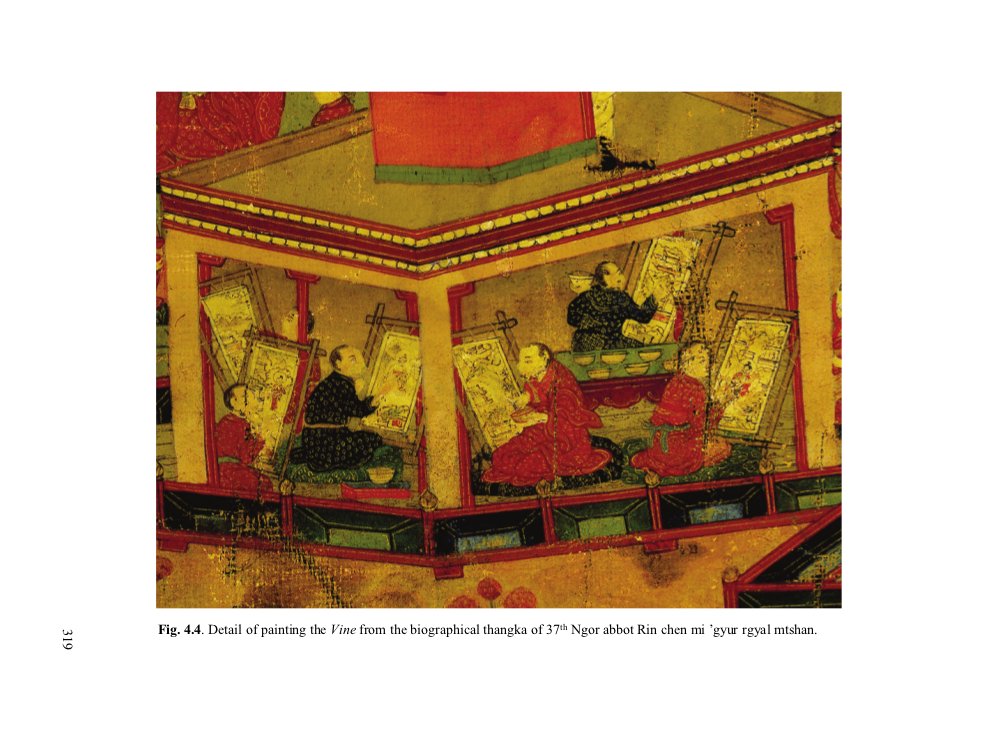Nancy Grace Lin. ‘Adapting the Buddha’s Biographies: A Cultural History of the Wish-Fulfilling Vine in Tibet, Seventeenth to Eighteenth Centuries’. PhD diss., University of California at Berkeley, 2011. 319 pp. ISBN 9781267228482, ProQuest ID 928450843.
From the Abstract
The Wish-Fulfilling Vine of Bodhisattva Avadānas (Skt. Bodhisattvāvadānakalpalatā, Tb. Byang chub sems dpa’i rtogs pa brjod pa dpag bsam gyi ’khri shing) by Kṣemendra is an eleventh-century Sanskrit anthology of stories about the previous existences of the Buddha and his disciples, along with events from the Buddha’s final life. Translated into Tibetan circa 1270 and incorporated into the Tibetan Buddhist canon, by the seventeenth century the Vine occupied a place of high prestige in Tibet. I argue that adaptations of the Vine—condensed literary digests, paintings, and woodcuts—constitute sophisticated forms of commentary that reveal the ingenuity and concerns of their producers. […]
In Chapter One I trace how the Fifth Dalai Lama (1617-1682) and his court popularized the Vine through public instruction, paintings, and literary activities. These conspicuously cultured displays promoted renewed interest in Sanskrit and the Indic origins of Buddhism, while contributing to broader projects of knowledge production and state-building. In Chapter Two I demonstrate how the lay Pho lha dynasty (r. 1728-1750) appropriated the Vine, sponsoring two large-scale multimedia productions while developing models for lay kingship and patronage. In Chapter Three I argue that Si tu Paṇ chen Chos kyi ’byung gnas (1700-1774), an influential monk of Sde dge in eastern Tibet, articulated his vision of the ideal monastic through the design of Vine paintings and other literary and visual productions on the Buddha’s life. In Chapter Four I study Zhu chen Tshul khrims rin chen (1697-1774), court chaplain of Sde dge, and his work on the Vine as commentaries on cultural production.


